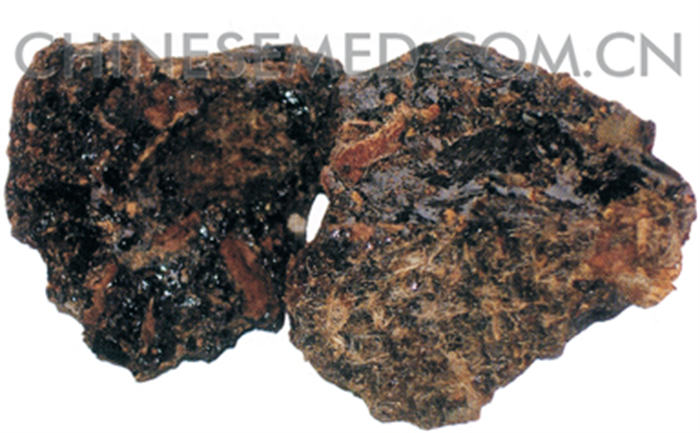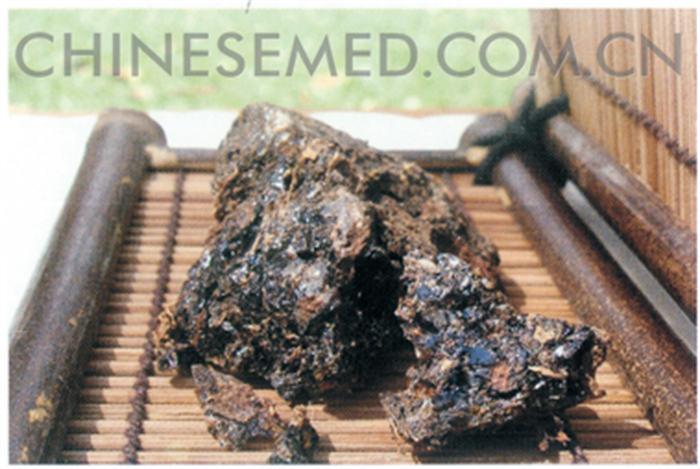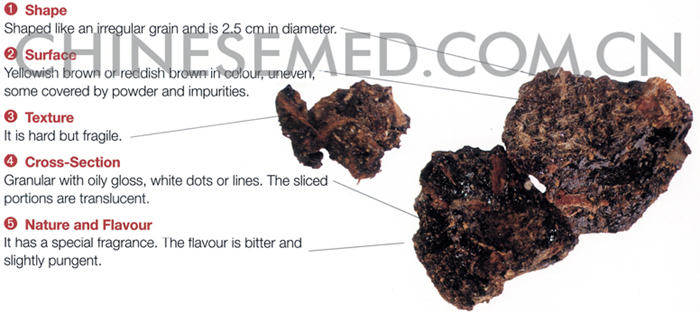

Source It is the resin from the bark of Commiphora myrrha Engl and other species in the same genus, (Fam. Burraceaese.)
Producing Areas Mainly produced in Somalia, Ethiopia and India.
Properties Bitter, Pungent, Mild in nature
Channels Liver, Heart, Spleen
ACTION
- Promotes blood circulation to remove blood stasis
Usually combined with frankincense to treat blood stasis conditions such as stomach and epigastric pain, amenorrhea and dysmenorrhea. - Reduces swelling to relieve pain
When ground to powder and applied externally, it can be used to treat trauma, carbuncle and periappendicular abscess.
Usage and Dosage
3-9 g used in decoction for oral use. Can be ground to powder for external use.
Note
Contraindicated for pregnant women and patients suffering from blood deficiency without stasis.
Not suitable for those with weak stomach and vomit easily when exposed to the bitter flavour in the dense part of the herb essence.



Storage
The herb tends to lose its fragrance, changes colour, becomes soft and sticks together, and ignites easily when exposed to heat. It should be kept in a sealed container and stored in a cool dry place. Prevent from fire and high temperature.
Description of Quality Herb
Quality myhrr is big in size, reddish brown in colour, translucent and sticky, has a strong-lasting fragrance and contains little impurities.
Professional Tips
Resina Olibani VS Resina Myrrhae
Similarities: Promote blood flow and relieve pain; promote subsidence of swelling and tissue regeneration; promote normal flow of qi, relax the muscles and joints.
Differences:
Resina Olibani: Its properties are warm and it promotes the normal flow of qi, and relaxes muscles and joints.
Resina Myrrhae: Its properties are neutral and it helps to remove blood clots and dispel blood stasis.

